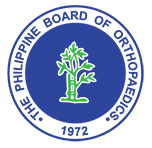Elogbook Guidelines
- Guidelines as to the Use of the E-logbook:
a. The resident trainee is expected to exercise honesty in logging in of his/her cases. The e-logbook is a sacred document serving as an official basis for accreditation and credentialing/certification, as stated above.
b. The resident trainees should diligently enter the data of their case, completing the initial data required within a prescribed lock-in period. The lock-in period is set at two (2) weeks, meaning the case should be logged within two weeks after the case has been done. Failure to do means that case is automatically forfeited.
c. The resident trainee should continue to update his e-logbook, especially as to the outcome and follow-up data. Once logged and locked in, updates may be done anytime.
d. All the entries should conform to the Data Privacy Act, meaning there should be no information, especially in the entries indicated below, that can be traced back to the patient’s identity.
e. The E-logbook is now being restructured to become an E-portfolio which is also an essential Workplace-based Assessment Tool. The data required in the e-portfolio includes the following:
i. General Information:
MUST
-
-
-
-
- Patient ID including age/gender and date of admission, and date discharged
- Surgery performed including the date it was done, appropriate CPT and Complexity
- Appropriate Classification systems
- Implants used
- The role played and members of the surgical team
ii. Preoperative Data:
MUST
-
-
-
-
- Diagnosis, including ICD-10
- Relevant data as to Preoperative Planning, Surgical Tactic and Templating, radiographic measurements
- Gross pictures and imaging
OPTIONAL
-
-
-
-
- Relevant PDF journals or other educational resources as evidence that it was adequately studied
- Pre-op discussion, including PowerPoint slides, comments of the consultant staff as evidence it was discussed in the Preoperative Conference
- All Workplace-Based Assessment Tools
iii. Intra-operative data:
MUST
1. Relevant documentation for the case, especially
a. patient positioning
b. gross pictures of relevant surgical steps
c. intra-op findings, and
d. radiologic imaging
e. problems or complications if any
2. Relevant narrative of key and salient steps
OPTIONAL
-
-
-
-
- Operation technique expressed in a paraphrased manner for the evaluator to assess the thought process during the surgery
iv. Post-operative Data:
MUST
1. Relevant information as to:
a. Immediate postoperative pictures and imaging
b. Post-op measurements
c. Follow-up dates and functional outcome, including PO pictures and/or videos
2. Relevant laboratory information, like:
a. Final histopathology pictures and report
b. Frozen section/cultures, etc
3. Other treatment modalities used and rationale for such, like:
a. Antibiotic therapy
b. Chemotherapy
c. Radiotherapy
v. Learning and Reflections:
MUST
-
-
-
-
- Personal Reflections:
a. What went well in the case
b. What to do differently next time
OPTIONAL
-
-
-
-
- Relevant Workplace-Based Assessment Tools used

